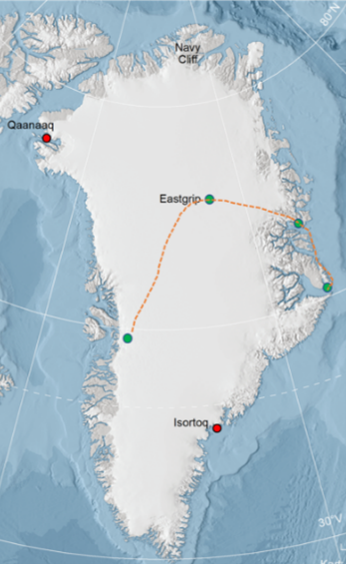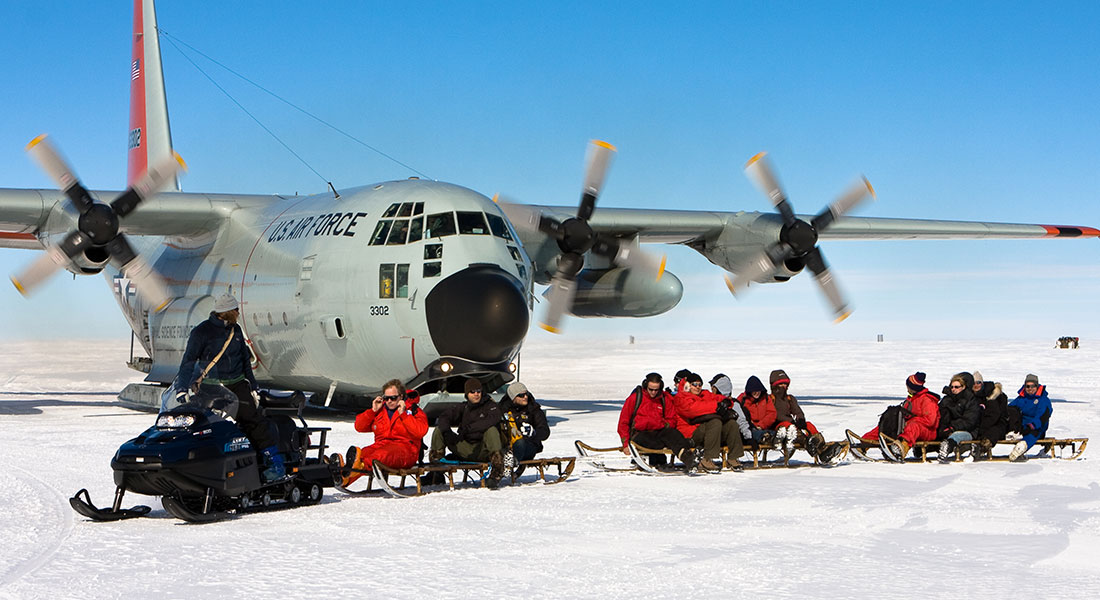Chemistry & impurities group
MSc and BSc projects in Continuous Flow Analysis (CFA) of chemistry and impurities.
Contact: Helle Kjær, Anders Svensson and Vasileios Gkinis
These particular master and bachelor projects involve chemical measurements of ice cores, for example informing on wind patterns, aridity, volcanic eruptions and sea ice variability.
Global volcanism of the last glacial period (60, 30, 15 ECTS)
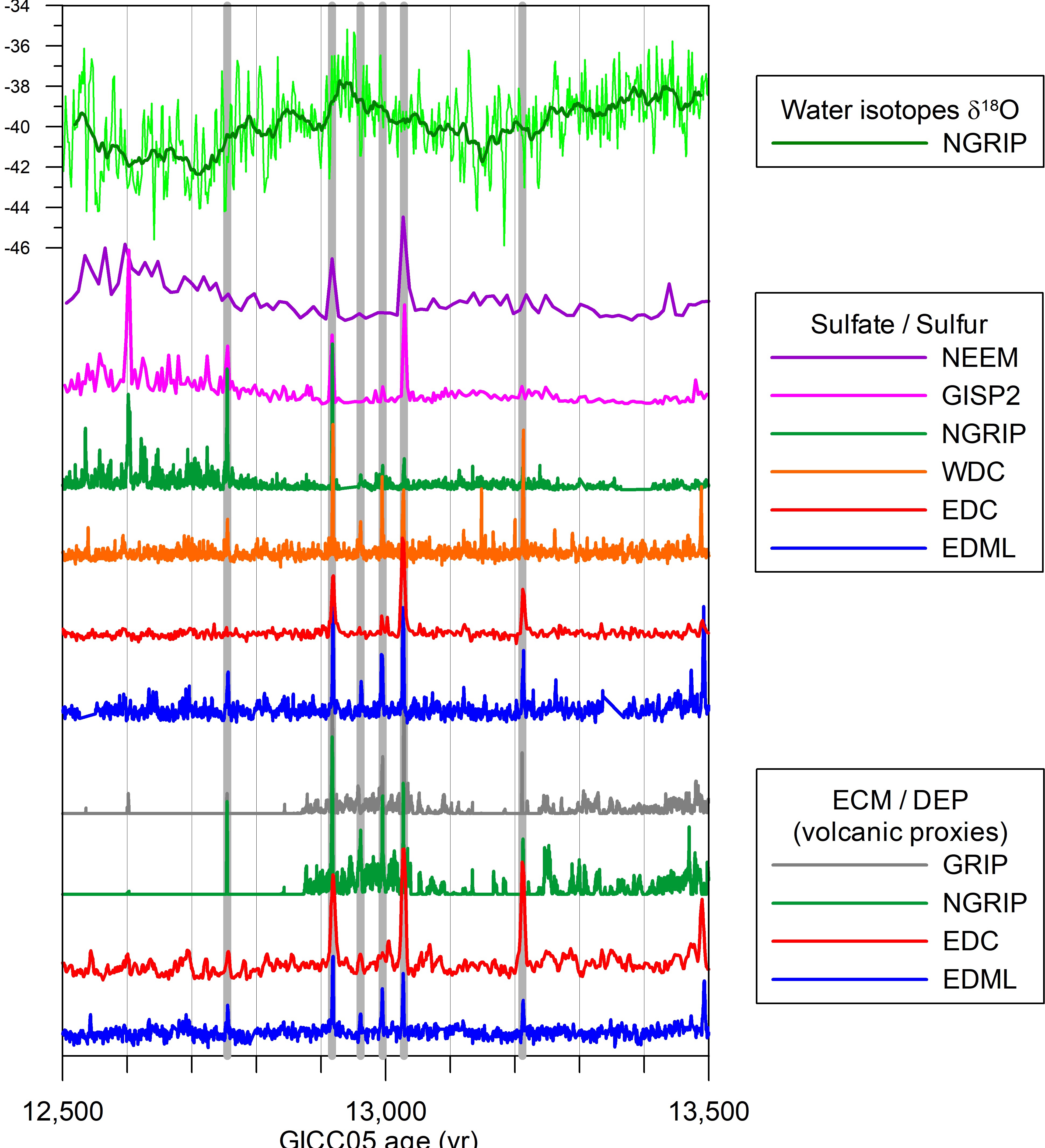
Volcanism has significant impact on climate and volcanic records are used to force climate models together with orbital forcing, greenhouse gasses etc. Using existing acidity records from Greenland and Antarctic ice cores we are currently mapping out the magnitude and frequency of large volcanic eruptions occurring during the last glacial period (11-115 ka BP). Student projects related to this topic could involve quantification of the deposition of sulfate and chloride on the ice sheets, the frequency and duration of past eruptions based on ice core records, estimates of the climatic impact of the eruptions, or attempts to correlate the major eruptions seen in the ice to well-known pre-historical eruptions. It is also possible to work on tephra particles from the ice cores that are applied to identify the source of eruptions. The projects typically involve some programing for manipulation of large datasets.
Contact: Anders Svensson
Recording the sound of ancient bubbles in ice cores
Msc Thesis Project: The sonic signature of ancient air bubbles in ice cores
Keywords: ice cores; paleoclimate; Greenland; polar research; Continuous Flow Analysis; sound measurements; total air content; Python; spectral analysis; bubbles
The air bubbles occluded in polar ice cores contain extremely valuable paleoclimatic information in the form of ancient air, whose composition can be determined in the lab yielding time series of gas concentrations in atmosphere spanning millennia. Another characteristic of the ancient air bubbles is their popping sound emission when ice core samples are being controllably melted for high-resolution Continuous Flow Analysis measurements.
We would like to investigate the audio signal of the “popping” bubbles. Our goal is to perform high quality sound recordings followed by spectral analysis of the bubble popping frequencies in order to infer how many and how large the bubbles are. Therefore, we offer a Master thesis project for a motivated student who will further develop the recording and melting system as well as work on the data analysis of the sounds recordings.
You can expect to gain skills in sound and bubble physics, sound recordings as well as high resolution ice core measurements. You will also work with noise filtering and spectral analysis techniques. Prior experience in data 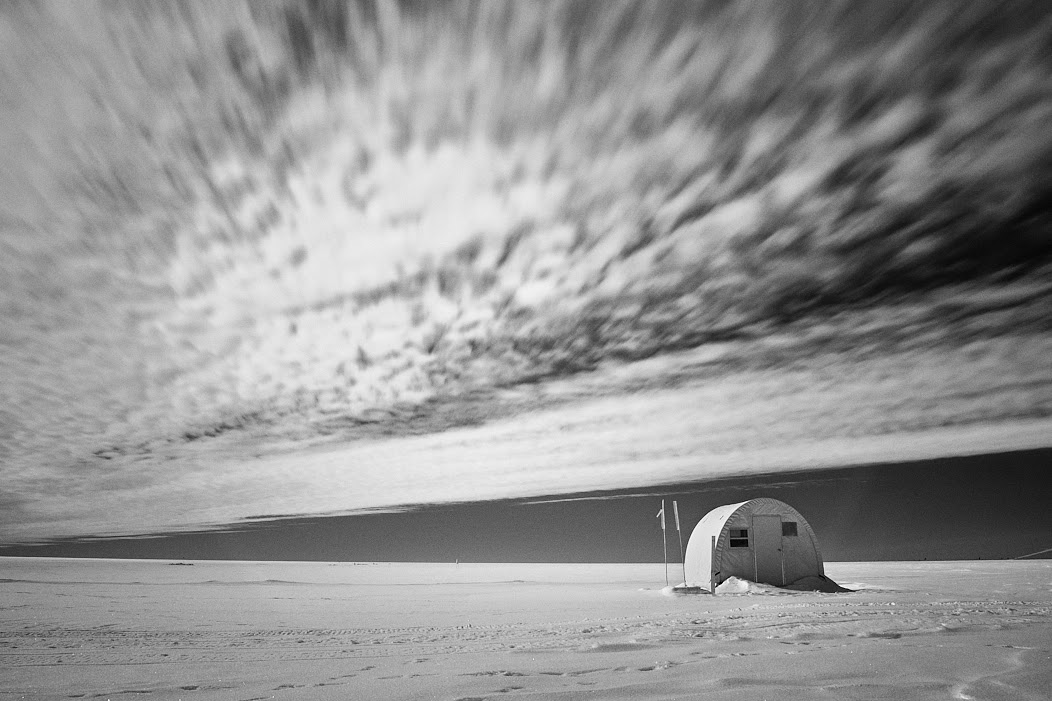
analysis with Python/Matlab is a plus. PICE is an active, multinational/multicultural group with plenty of learning opportunities.
We will be happy to hear from you!
Should you have any questions on the project feel free to contact: Vasileios Gkinis
Spatial sea ice extent of the past (60 ECTS
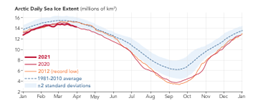
Sea ice is rapidly declining in the Arctic over the satellite period. https://earthobservatory.nasa.gov/world-of-change/sea-ice-arctic.
The Arctic is rapidly changing and sea ice has declined through the satellite period. To constrain if this is abnormal compared to earlier climate states this product focusses on compiling datasets of past climate extent into spatial maps. The project could involve utilizing AI methods on opens source datasets, and is challenged by the availability and dating uncertainties of paleoclimatic records. Student background –datascience, physics, geophysics.
Contact: Helle Astrid Kjær or Nanna Andreasen
Spatial variations in ice core proxies (60 ECTS)
The impurities come from different sources and thus yield different information about the climate system. We know ie about past forest fires from NH4+, Dust sources by Ca2+ and the state of the ocean by Na+. However also the transport to the site, the elevation of the deposition site, the local accumulation with more can influence the proxies. The spatial variability in the ice core data is largely unconstrained so working with samples from two traverses and additional older material, this project aims to enhance the understanding of proxies from Greenland ice cores. It involves specifically estimating the quality of our IC system, running Greenland surface snow samples collected over two traverses in 2021 and 2022 by means of Ion Chromatography, further there is the option to add back trajectory analysis for source regions. All with the aim to interpret the spatial signal in ice core proxies. The 1 year project involves system development, testing, measurement campaign and interpretation of the climate record. Datascience, physics, geophysics, chemistry.
Gfeller, Gideon, et al. "Representativeness and seasonality of major ion records derived from NEEM firn cores." The Cryosphere 8.5 (2014): 1855-1870.
Kjær, Helle Astrid, et al. "Canadian forest fires, Icelandic volcanoes and increased local dust observed in six shallow Greenland firn cores." Climate of the Past 18.10 (2022): 2211-2230.
Contact: Helle Astrid Kjær
A novel sea ice proxy (60 ECTS)
Sea ice is rapidly disappearing in the Arctic. To constrain if this is abnormal compared to earlier climate states, proxies from ice cores can be used. A novel ice core proxy based on diatom species found in ice cores (Tezner et al. 2022) from land glaciers will be developed and compared to existing sea ice proxies to constrain sea ice extent and variations over the current warm period. Further the connections between past sea ice variability and climate observed in the same ice cores and other climate archives will be studied. The 1 year project involves system development, testing, measurement campaign and interpretation of the climate record. Student background –geology, geography, geophysics.

Tetzner, Dieter R., Claire S. Allen, and Elizabeth R. Thomas. "Regional variability of diatoms in ice cores from the Antarctic Peninsula and Ellsworth Land, Antarctica." The Cryosphere 16.3 (2022): 779-798.
Contact: Helle Astrid Kjær
Volcanic markers (60 ECTS)
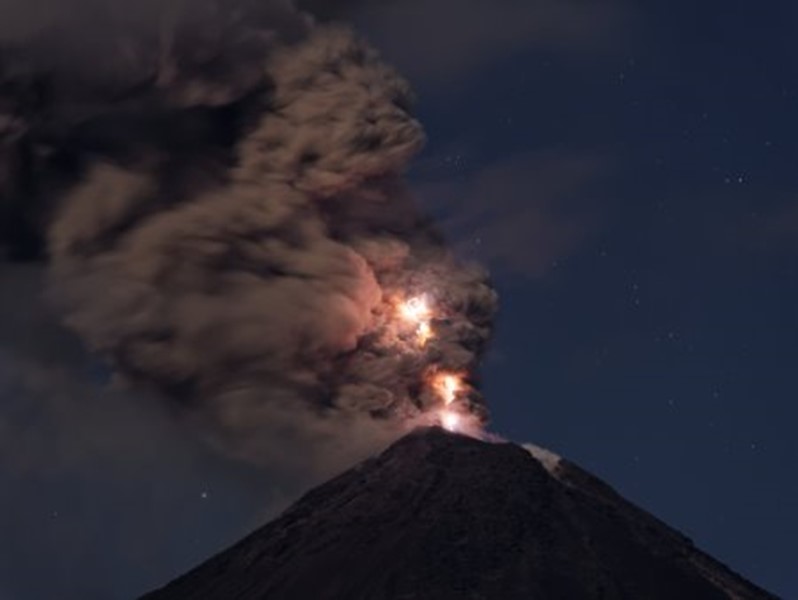
Volcanic eruptions generate particles as well as acids that impact climate. Both remains from the particles and the gases can be found in polar icecores. Picture by Marc Szeglat / vulkane.net
Volcanic eruptions have significant impact on climate. Ice cores contain an archive of past atmospheric loads of volcanic related particles. These cause an increase in the ice conductivity, acidity and loads of individual chemical species such as Cl-, F- and SO43-. Such chemical species can be analysed by ion chromatograph, however this require prior cleaning of samples. Continuous flow offer better resolution and unfortunately however the CFA methods available for SO43- (Bigler et al. 2007) analysis are cumbersome and have poor limit of detection. This project focuses on the development of a novel absorption based method for SO43- better suited for the concentration of SO43- found in ice cores that are typically of parts per billion of the melted ice (ppb, 1:10^9). This project works on optimizing existing or finding novel methods for SO43- detection by CFA and subsequently analyse the results thereof in terms of climate. The 1 year project involves system development, testing, measurement campaign and interpretation of the sulfate record. Student background physics or chemistry.
Contact: Helle Astrid Kjær
Chemical record from ice cores (15, 30 or 60 ECTS)
The chemical content in the ice is analysed by continuous flow analysis systems (CFA-Bigler et al. 2011) or discrete eg, by means of Ion Chromatography (IC). The impurities come from different sources and thus yield different information about the climate system. Some of the impurities have an annual cycle, and these records can therefore be used for identification of the annual layers in the ice. This project involves measurement campaign and interpretation of the climate record. In specific glacial sections of the GRIP ice core and shallow cores covering the last few decades are planned for analysis in 2024. Student background-physics, chemistry, climate change and more.
Contact: Helle Astrid Kjær
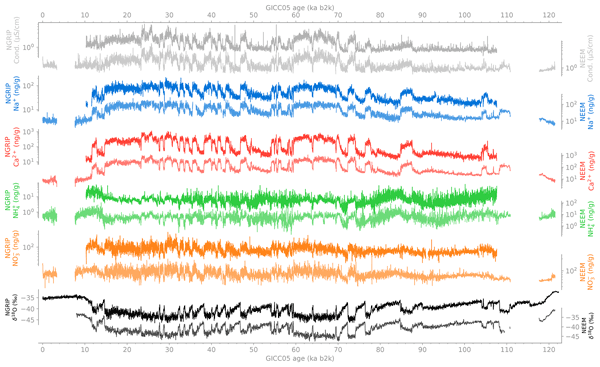
The NEEM and NGRIP CFA profiles covering the Last glacial period. Figure from Erhardt, Tobias, et al. "High-resolution aerosol concentration data from the Greenland NorthGRIP and NEEM deep ice cores." Earth System Science Data 14.3 (2022): 1215-1231.
Novel methods for CFA (60 ECTS)

Ice cores from Greenland and Antarctica contain very small amounts of impurities. Typically, the concentration levels of impurities are in the order of magnitude of parts per billion of the melted ice (ppb, 1:10^9). Therefore, the detection methods have to be very sensitive. The chemical content in the ice can be analyzed by continuous flow analysis systems (CFA-Bigler et al. 2011). CFA methods are often based on absorption or fluorescence spectroscopy methods, but conventional methods need improvements to meet the low concentrations in the ice cores. This project works on optimizing novel methods for CFA. The 1 year project involves system development, testing, measurement campaign and interpretation of the climate record.
Contact: Helle Astrid Kjær

